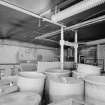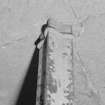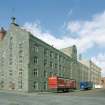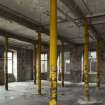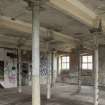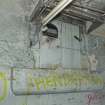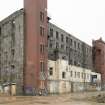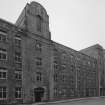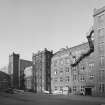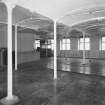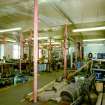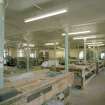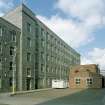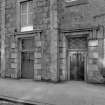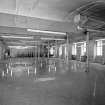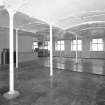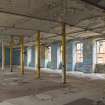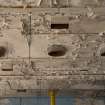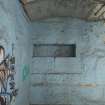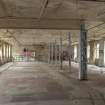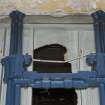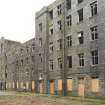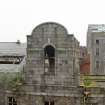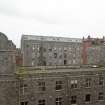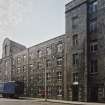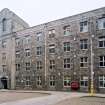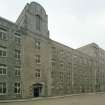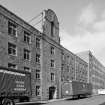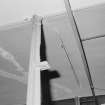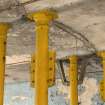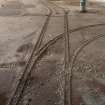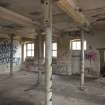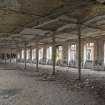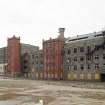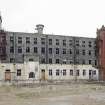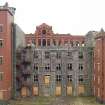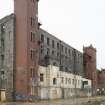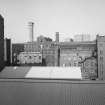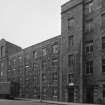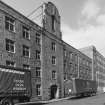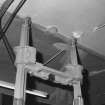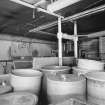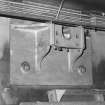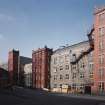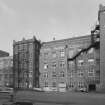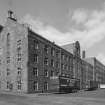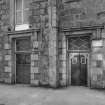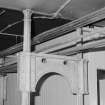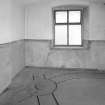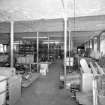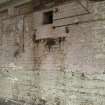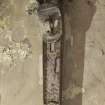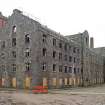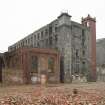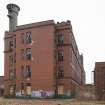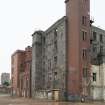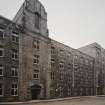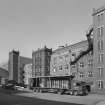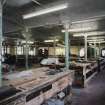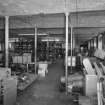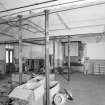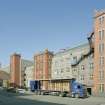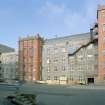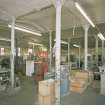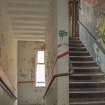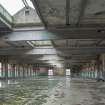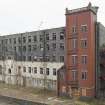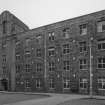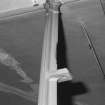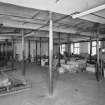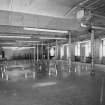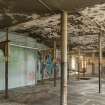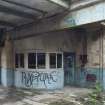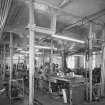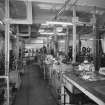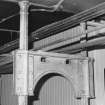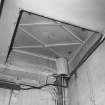Aberdeen, Maberly Street, Broadford Works, Old Mill, New /south Mill And North Mill
Mill (19th Century)
Site Name Aberdeen, Maberly Street, Broadford Works, Old Mill, New /south Mill And North Mill
Classification Mill (19th Century)
Alternative Name(s) Broadford Firehose And Canvas Works; Maberley Street
Canmore ID 291126
Site Number NJ90NW 125.13
NGR NJ 93582 06893
NGR Description NJ 93571 06877, NJ 93595 06857 and NJ 93573 06922
Datum OSGB36 - NGR
Permalink http://canmore.org.uk/site/291126
First 100 images shown. See the Collections panel (below) for a link to all digital images.
- Council Aberdeen, City Of
- Parish Aberdeen
- Former Region Grampian
- Former District City Of Aberdeen
- Former County Aberdeenshire
NJ90NW 125.13 93571 06877 (Old Mill), 93595 06857 (South or New Mill) and 93573 06922 (North Mill)
a)The Old Mill (NJ 93571 06877) of 1808, was constructed as a fireproof spinning mill. It is of brick and stone built and over four storeys. It is probably the oldest iron-framed mill in Scotland and the fourth oldest known to survive in the world. The cruciform internal column style rare example of early industrial building design.
This mill is 7 bays long internally and has brick arched ceilings between cast iron beams carried on rows of four cruciform, cast iron, columns. The beams are relatively narrow and have a cambered underside not unlike the hacking (a process in the production of flax) wing at Ditherington Mills (Shrewsbury, Shropshire), 1797/1805 and 1811. It also is similar to Barrack Mill, Whitehaven (1809), Campions Mill, Whitby (1814) and Marshalls Mill, Leeds (1806/1817). The columns in Old Mill Broadford show entasis (convex curve in the shaft of the column) as in all the examples cited. The mill was started c.1808 by Scott, Brown and Co. and advertised for sale in 1811 as having "34 frames, 24 for spinning flax, 9 for tow..." (short flax fibres removed during processing - Dundee eventually specialised in tow spinning) and one for twisting thread, "...a tow carding machine and flax preparing frames". It was driven by a steam engine built in Leeds built by Murray, Fenton and Wood (removed). Unlike Ditherington, Mill, Old Mill had a wooden roof. Watson also suggests how the machines in the Old Mill were operated based on an 1818 drawings. On the ground floor (carding in 1818), the 12 tow cards were run from belts on drums on the central shaft running longitudinally. Watson also says that "Bevel gearing between the central columns appears to have been the only way of of transferring power to the upper floors". (Watson, 236)
b) South Mill (NJ 93595 06857) built around 1820 to 1830 as a second fireproof spinning mill. Rare survival from this period.
c) North Mill (NJ 93573 06922) built c.1860, fireproof spinning mill with a single off-centre row of columns apart from the N end where the columns are three deep.
All three buildings were re-roofed in 1922-23 and the stair and lavatory towers were then added. At around the same date the boiler and stove houses were demolished.
M Watson, 1992
Range of 4 and 5 storey mills in the centre of the site, Old Mill (7 bays) 1808, South Mill (8 bays) circa 1820, New Mill (14 bays) 1850-60. Part of large group of textile manufacturing and storage buildings, granite and brick-clad, of iron-framed or reinforced concrete construction, with setted streets between them. Slate or flat concrete roofs.
The oldest iron-framed mill in Scotland and the fourth oldest known to survive in the world (after others of 1796, 1804 and 1805, all inter- related). The adjoining South Mill may be the third iron framed building in Scotland.
Built for Scott Brown and Co (of Angus), 1808, bankrupt 1811 and sold to Sir John Maberly MP, entrepreneur, speculator and introducer of jute to the UK. Maberley rapidly developed Broadford Works, adopting the first gas lighting of an industrial complex in Scotland, by Boulton and Watt in 1814-15, and Scotland's second power loom linen weaving factory in Scotland in 1824. Maberly was himself bankrupt and in 1834 the works passed to Richards and Co, who had a bleachworks at Rubislaw and branches at Montrose, produced canvas tarpaulins and as a particular specialism, fire hoses. Latterly man- made fibres for carpet yarn etc has replaced flax. Employment peaked at 3,000, once the largest single employer in Aberdeen. (Historic Scotland).
Standing Building Recording (2 October 2015 - 11 January 2017)
NJ 93609 06881 (NJ90NW 125) A standing building survey was carried out, 2 October 2015 – 11 January 2017, primarily of buildings to be demolished prior to the creation of an urban village. The current condition of the buildings being retained was also recorded.
Broadford Works was originally constructed by Fenton Murray and Wood of Leeds in 1808 for Scott Brown and Co. of Angus. It went bankrupt in 1811 and was sold to Sir John Maberly MP, entrepreneur, speculator and introducer of jute to the UK. Maberly rapidly developed Broadford Works,
adopting the first gas lighting of an industrial complex in Scotland, by Boulton and Watt in 1814–15, and Scotland’s second power loom linen weaving factory in Scotland in 1824. Maberly was himself bankrupt and in 1834 the works passed to Richards and Co., who had a bleachworks at
Rubislaw and branches at Montrose, and produced canvas tarpaulins, and as a particular specialism, fire hoses. In the 1830s the business was taken over by John Baker Richards, a London merchant. Under his ownership and name the company expanded through the 19th century. By the 1880s
eight steam engines drove the plant and some 3000 mill hands were employed. The company manufactured linen sheeting, towelling, sail canvas, tent cloth and hose web. Most of the buildings to be demolished were later additions and all the older mill buildings are being retained.
Archive: NRHE
Funder: First Construction Ltd
Alison Cameron - Cameron Archaeology
(Source: DES, Volume 18)











































































































